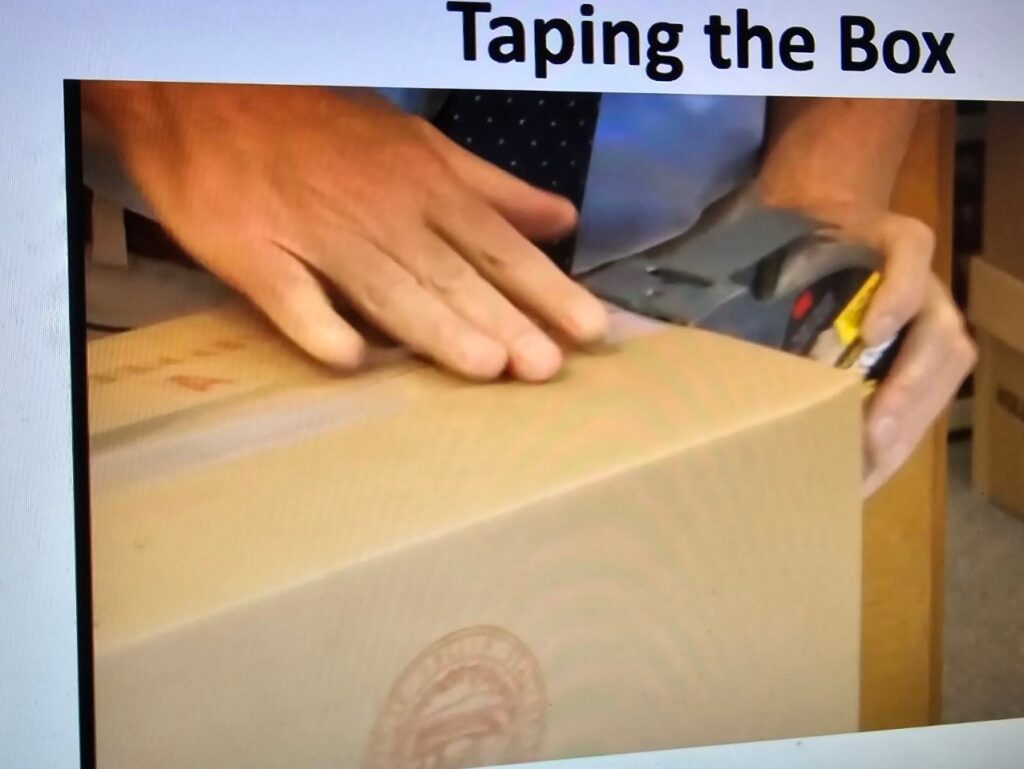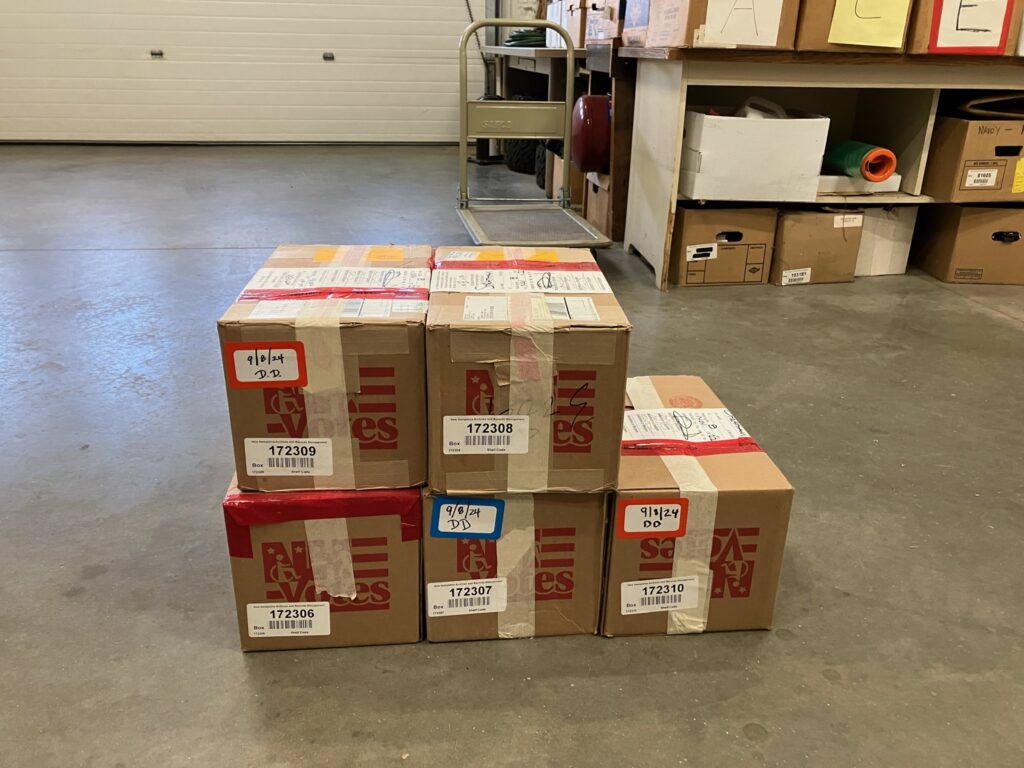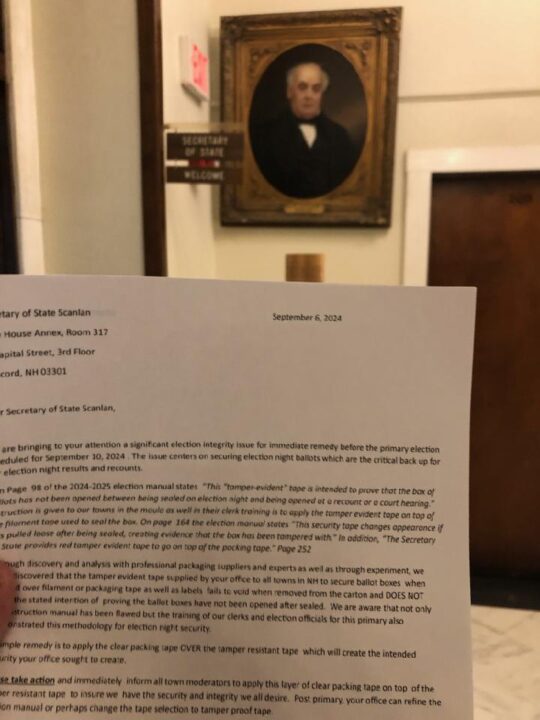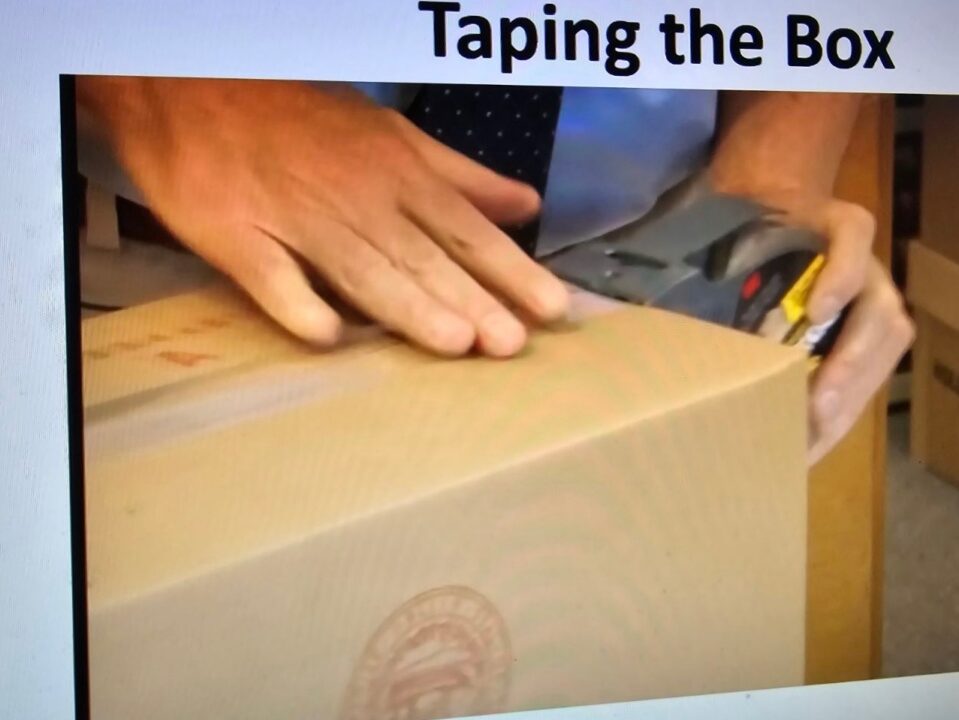New Hampshire likes to advertise how clean and fair its elections are, but if you’ve spent any time here looking into it, this is complete and total bullish!t. From out-of-state voters to mishandled ballots to poorly secured boxes of ballots (and the ever-present “Look, we found one more box”), election integrity has long been an issue. And that is without broaching the matter of the state not following election law. It’s a mess.
To be fair, it is systemic BS so many of the people involved don’t even realize. Take, for example, an activist who went to a town, where they were preparing for next Tuesday’s Statewide primary. Much to the surprise of the election officials, the approved method for securing ballots in cartons may be systemically flawed.
According to the Secretary of State’s election manual (page 98),
Securely seal each container. First seal up all sides of the box with filament tape.
Second, stick the official “Label for Resealing Ballots” on the box. Third, use the red security tape to make a tape seal around the entire box, and along the edge of the label. Then tape down the ends of the label with two short strips of the red tamper-evident tape.
This red security tape will change its appearance if it is pulled loose after being stuck to the box. This “tamper-evident” tape is intended to prove that the box of ballots has not been opened between being sealed on election night and being opened at a recount or a court hearing.
Filament tape is reinforced tape. It has cotton or poly threads embedded to help secure the flaps or corners of cartons to which it is applied. It may appear transparent or opaque. The SoS instructs election officials to apply this tape first.

However, the election integrity watchdog demonstrated what happens when the tamper-evident tape is applied on top of filament or clear tape; it is possible to remove the former without leaving any evidence of tampering. And even if it did, you could remove the clear or filament tape (with any tampering evidence) and retape the carton later.
Based on this example, you could do whatever you wanted to these ballots and retape the box without anyone knowing the difference. Anywhere in the state, if everyone is following the recommended guidelines.
The election officials in that town were reportedly mouth-agape at the revelation, and I take it they were not new to the role. It just never occurred to them. What they now do with this information is not clear, but we felt compelled to share it. The system appears flawed and open to acts of fraud.
Additionally, it appears possible to apply the tamper-evident red tape and remove it directly from the cardboard without any evidence of tampering if the carton is retaped.
I’ve got some experience with this. Many years in logistics, as well as applying tamper-evident seals on equipment to protect its warranty, have taught me that the tamper-evident device, whatever it is, must come into direct contact with the thing you are trying to secure. You do not put anything down first, clear tape in particular (in the case of cartons). While I’d like to see more state-approved tape for additional testing based on the anecdotal evidence, something is not right, not that it ever was, regardless.
Securing ballots is not a new problem, nor is following the sealing or storage rules. Numerous accounts exist of cartons being accessible from the bottom, broken, unsealed, and unsecured corners, and boxes with so much tape of all varieties that ascertaining their status as untampered is impossible. Improper storage, poorly logged or not at all, improperly numbered and labeled cartons, and the list goes on.
These cartons have paper masking tape on them with the approved red tape across the box not along the opening. Masking tape appears nowhere in the sealing instructions for ballots and applying red tamper tape in this fashion does not prevent tampering.

Here is a box that had lined tape (also not indicated in the sealing instructions) but it does show evidence of tampering because you can never get those lines lined up when you reseal it.

I do not know when or where this tape was permitted (if at all) but it appears to have done the job.
Feel free to wonder what fresh hell this is and how we are to know what or when all that tape was applied.

Not to spec, at a minimum, but is it secured? Can we guarantee this was not tampered with and retaped mummy style to hide the unlawful ingress.
As with most laws in New Hampshire I suspect their is an inadequate or absent enforcement mechanism with enough teeth to get people to follow the rules or the laws. We can also say from experience that election laws universally are applied selectively. And until these matters are resolved, there’s no way to say with certainty that your elections are free, fair, and secure.
Update
A letter outlining the ballot security and election integrity issues associated with the stated policy in the SOS elections manual has been hand-delivered to the Governor, the Secretary of State, and the Attorney General. They (apparently) need to be formally notified if we expect them to do anything about it, not that we do.
Here is the letter.
letter-to-the-sos-1And here is a pic of the letter being hand-delivered to the NH Secretary of State.

